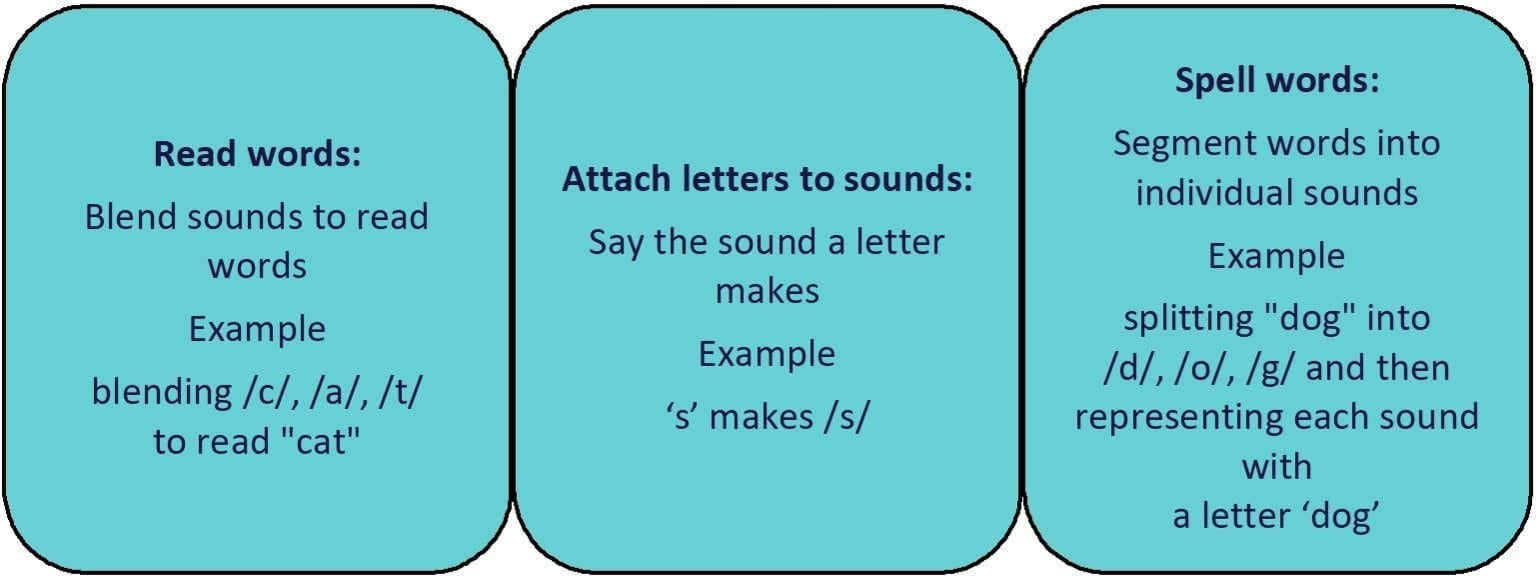Overview
Reading is a vital component of the Victorian Curriculum in government schools. It not only opens new worlds and broadens understanding but also fosters enjoyment and curiosity. Developing confident, engaged readers is key, and learning to read should be an exciting and rewarding experience for children. Phonics, which teaches the connection between letters and sounds, is a crucial step in making reading accessible and enjoyable for all students.
From 2025, all Victorian primary schools will use systematic synthetic phonics as the basis of their reading programs. This evidence-based approach supports your child in developing critical word reading and spelling skills right from the Foundation years.
Key Messages
- Systematic synthetic phonics, an evidence-based approach, will be taught to children in Victorian government schools.
- It teaches children to read and spell words by learning sound-letter relationships and using these relationships to blend sounds together in reading and segment sounds in spelling.
- Your child’s home language is just as important and valuable as Standard Australian English. It is a part of their identity and something to be proud of.
- For many children, Standard Australian English may be their second or third language or dialect.
- Koorie English is not a ‘bad’ form of Standard Australian English.
- A child’s home language, such as Koorie English, Aboriginal English, or other dialects or languages, may sound different when spoken by different people.
What is phonics?
Phonics is a way of teaching reading and writing by connecting sounds with letters or groups of letters. Phonic skills help children understand how letters link to sounds in spoken language and how those letters work together to form words.
What is systematic synthetic phonics?
Systematic synthetic phonics is an evidence-based way of teaching children to read and write words, and is used from Prep to Grade 2. This approach is called “systematic” because it follows a clear, step-by-step order for teaching sounds. It’s called “synthetic” because children first learn individual letter sounds and then learn how to blend those sounds together to form words.
Teaching children the connection between letters and their corresponding sounds, means they gain the skills to read words by sounding them out (decoding). They also learn to write words by breaking them down into sounds (encoding).
Children being taught systematic synthetic phonics become increasingly proficient in reading and spelling words. This increases their confidence, motivation and enjoyment of reading.
What does this mean for you and your child if you speak another language or a dialect of English at home?
Learning phonics helps children to read and write using Standard Australian English; the language used in the Victorian Curriculum. Families may speak different languages or dialects at home. Some families may use a traditional Aboriginal or Torres Strait Islander language or a dialect of English, such as Koorie English. Some may use a language other than English from a different country. For children who speak another language or dialect at home, Standard Australian English might only be spoken at school.
It is important for all children to know their home language is valuable. Every child needs to feel that their home language is important and something to be proud of, while also learning Standard Australian English at school. Understanding how to move between languages or dialects is a valuable skill known as code-switching.
If you would like to learn more about English as an Additional Language (EAL), please visit English as an Additional Language (EAL). If you would like to learn more about Koorie English, please visit Koorie English Online.
Code-switching and why it matters
Code-switching is when people switch between different languages or ways of speaking depending on who they are talking to and where they are. It is a valuable skill that helps children communicate effectively in different situations.
You can talk with your child about how we all change the way we speak depending on who we are with. For example, children might choose a different language or way of speaking to their teacher than to an aunty or uncle, and differently again when talking to their friends.
For more information about students using multiple languages, see Plurilingual awareness.
Helpful tips for supporting your child
If your child feels worried or notices their way of speaking is different from others:
- reassure them that there’s nothing wrong with how they speak - everyone speaks differently, and that’s okay
- encourage them to keep using their home language. It is an important part of who they are.
If your child is practising or speaking Standard Australian English at home:
- respond using the language you normally use to speak with your child
- remind them that they can switch back to their home language when they’re at home or with family or community or friends.
If your child brings home different types of books or texts from school:
- ask them to tell you what they know about the new book or texts
- encourage them to read aloud any new words or parts of the book, using the phonics strategies they’ve learned at school.
Updated
